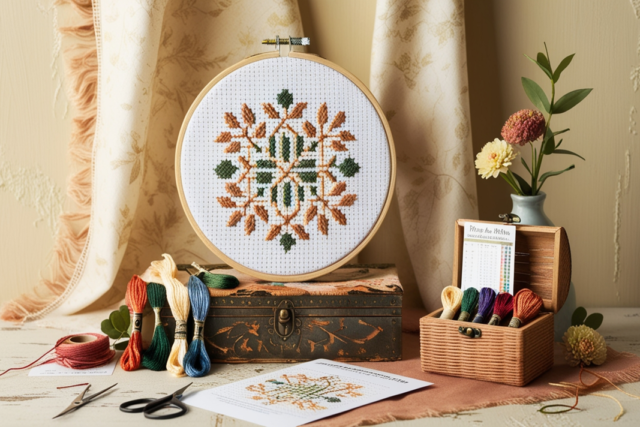Introduction to Cross Stitching
What is Cross Stitching?
Cross stitching is a form of embroidery in which X-shaped stitches are created in an ordered grid on fabric, creating detailed and colorful designs. Cross stitching offers individuals an accessible needlework technique with endless potential. Beginners may find cross stitch easy while experienced crafters have many possibilities available to them.
The History and Evolution of Cross Stitching
Cross stitching has been practiced for millennia, with its roots dating back to the Middle Ages. Although initially practiced to adorn household linens, today cross stich has evolved into an artistic hobby allowing people to express themselves creatively through complex patterns and personalized designs. Modern cross stitch kits now come complete with various materials so stitchers can craft both classic and modern projects.
Why Cross Stitching is a Popular Hobby
Cross stitching is a rewarding craft for people of all ages, offering relaxation and stress relief through creativity and ease. Thanks to DIY culture and easy access to online tutorials and patterns, cross stitching has seen a recent resurgence as an enjoyable hobby.
Benefits of Creating Your Own Cross Stich Kit
Customization to Fit Your Needs
One of the primary benefits of creating your own cross stich kit is customizability. By selecting fabrics, threads and patterns that meet your individual preferences, creating your kit to meet both your skill level and personal aesthetic is possible. This flexibility enables you to design an individual experience.
Cost Savings Compared to PreMade Kits
Buy components individually instead of premade kits can often be more economical. By giving you complete control over quality and quantity of materials used, ensuring you only pay for what you need without paying extra for unnecessary extras.
Learning and Creativity Boost
By creating your own cross stich kit, you gain a greater understanding of its materials and techniques. Not only will this boost your skillset, but also give you an opportunity to experiment with fabrics, threads and patterns!
Understanding the Basics of Cross Stitching
The Cross Stitch Grid and Pattern
Cross stitching involves following a gridbased pattern where each square represents a stitch. This grid helps stitchers to visualize the design and track their progress. Patterns are often colorcoded, making it easier to differentiate between different thread colors and stitch counts.
Common Terminology in Cross Stitching
Understanding basic cross stitch terminology is vital for beginners. Words such as Aida,” floss,” and “hoop” are frequently mentioned in patterns and instructions, so familiarizing yourself with them will allow you to navigate tutorials more easily while understanding project requirements more completely.
Essential Techniques for Beginners
The main technique in cross stitching is creating the basic Xshaped stitch, but there are other essential skills, such as starting and ending threads securely, counting stitches accurately, and working with different thread types. Learning these foundational techniques is key to producing neat and consistent work.
Essential Materials for a Cross Stitch Kit
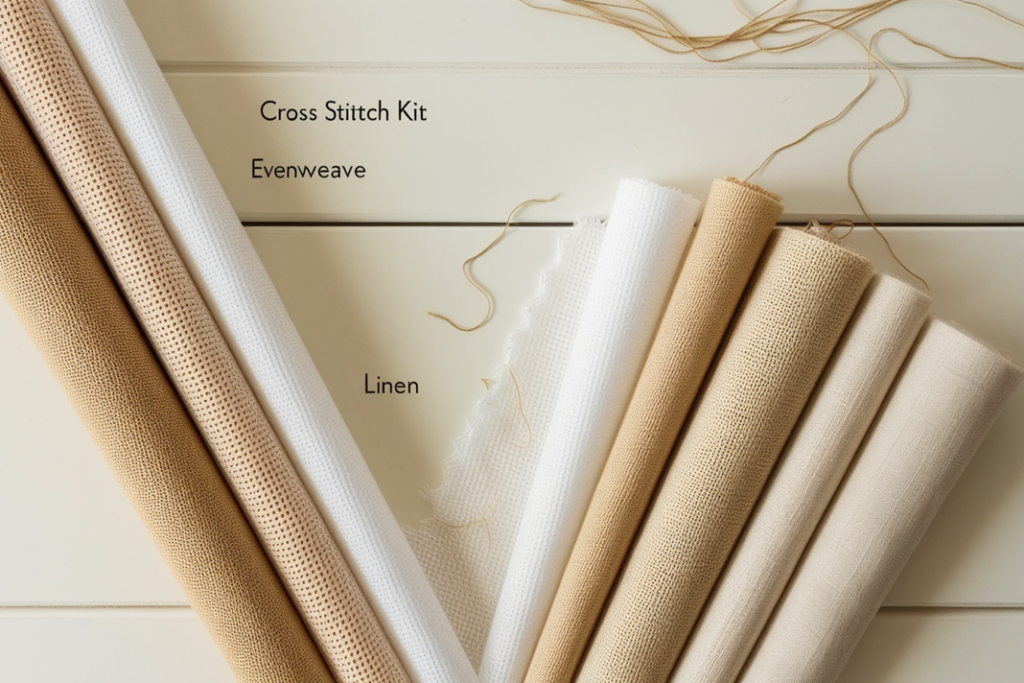
Fabric Types: Aida, Evenweave, and Linen
The fabric you choose is crucial for cross stitching. Aida is the most common type of fabric, known for its easytocount holes, making it perfect for beginners. Evenweave and linen are also popular, offering finer finishes and more flexibility for advanced projects.
Choosing the Right Embroidery Threads
Embroidery threads, or floss, come in various colors and materials. DMC and Anchor are two popular brands, known for their wide color ranges and quality. When building your kit, choose threads that complement your chosen pattern while also ensuring durability.
Needles: Types and Sizes for Cross Stitching
Cross stitch needles come in various sizes and types; the most widely-used tapestry needles are blunttipped tapestry needles. Your choice of needle size will depend on what fabric you are working with: larger needles work best with fabrics featuring larger holes while finer needles may be necessary for delicate fabrics.
Embroidery Hoops: Why You Need Them
An embroidery hoop provides the ideal environment for precise stitching. By eliminating fabric bunching and keeping stitches even and neat, using a hoop helps you stitch more efficiently than ever. Choose one that’s both comfortable for your hand and suitable for the size and scope of your project.
Choosing the Right Fabric for Your Kit
Differences Between Fabric Types
Aida fabric is ideal for beginners due to its distinct grid pattern, while evenweave offers a smoother finish with smaller stitch holes. Linen, though elegant, requires more experience as its weave is finer, making it harder to count stitches accurately.
How to Pick Fabric Size Based on Pattern
The size of your fabric should be chosen based on the stitch count and design of your pattern. Larger patterns require bigger pieces of fabric, and it’s always a good idea to leave extra space around the edges for framing and finishing.
Pros and Cons of Using PreGridded Fabrics
Pregridded fabrics come with guidelines printed directly onto them, which can make following a pattern much easier, especially for beginners. However, these grids can sometimes fade or be difficult to wash out after completing your project.
Selecting the Right Threads
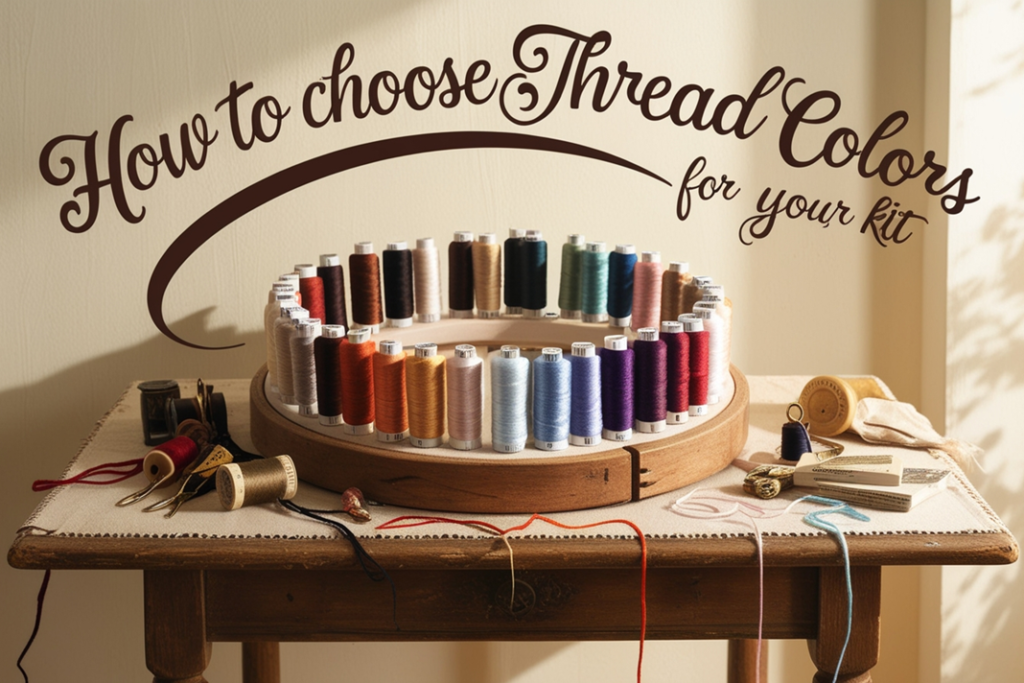
How to Choose Thread Colors for Your Kit
Choosing the right thread colors is key to creating a visually appealing design. To add additional personality to your work, try experimenting with different color schemes or variants, and use color charts to match tones to your design.
Understanding DMC and Anchor Thread Numbers
Both DMC and Anchor are renowned for their highquality threads. Each brand uses a numbering system to identify different shades of color. When following a pattern, ensure that you’re using the correct brand and number to achieve the desired look.
Tips for Organizing Threads in Your Kit
Keeping your threads organized is essential to avoid tangling and confusion during your project. Use thread bobbins or organizers to separate different colors, and label them clearly to ensure easy access while working.
Needle Selection for CrossStitching
The Importance of Using the Right Needle Size
Size matters when selecting needles to ease and precision your stitching experience. Larger needles tend to work best for coarser fabrics while finer needles work best with delicate, tightly woven fabrics. Choose one that floats easily through fabric without causing damage – and be mindful not to choose needles with sharp points that could puncture holes in it!
Different Types of Needles for Various Projects
Tapestry needles are the go-to choice for crossstitching, while crewel and embroidery needles may be necessary for specific techniques. Each type of needle serves a distinct function; having an assortment in your kit will ensure that no project can surprise you!
How to Store Needles Safely in Your Kit
Storing your needles safely prevents accidents and keeps them in good condition. Use a needle case or magnetic holder to keep them secure, and always replace dull or damaged needles to ensure smooth stitching.
Hoops and Frames: Tools for Holding Your Work
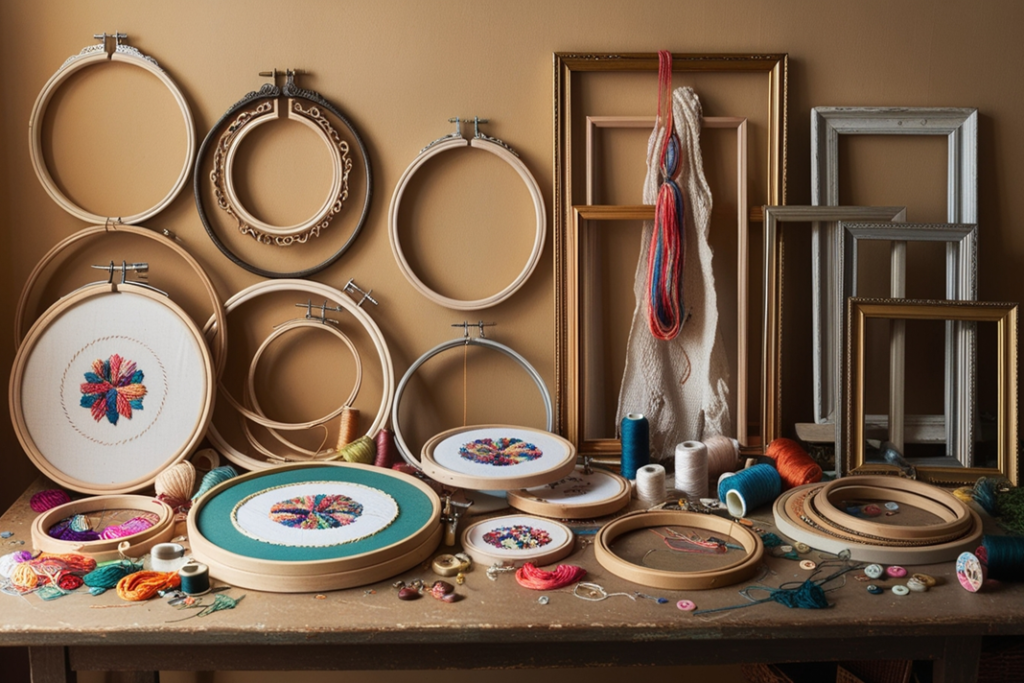
Choosing Between Hoops and Frames
While hoops are the most common tool for holding fabric, frames provide a sturdier option for larger or more intricate projects. Consider the size and scope of your project when deciding between a hoop or a frame.
Different Sizes of Hoops for Different Projects
Hoops come in an assortment of sizes, ranging from tiny (ideal for smaller projects) to enormous. Select one that comfortably fits in your hand while still providing enough space for stitching without stretching out fabric too much.
How to Properly Use and Maintain Your Hoop
For the best fabric tension when using a hoop, ensure it is tightened evenly around your work. Clean your hoop regularly so as to avoid dirt or oils transferring onto fabric from hands.
Creating a Personalized Cross Stitch Pattern
How to Design Your Own Cross Stitch Pattern
Designing your own cross stich pattern is an engaging way to customize your kit and add an individual touch. Get started by sketching on graph paper or using cross stitch software, making sure that each square represents one stitch. For more intricate designs, consider color coding to plan thread selection.
Tools and Software for Pattern Creation
Several online tools and software can help you create detailed crossstitch patterns. Programs like Stitch Fiddle or PCStitch allow you to upload images and convert them into crossstitch patterns. These tools are great for ensuring accuracy and providing a professional finish to your design.
Finding Free Patterns Online
If creating your own pattern feels overwhelming, there are many free resources available online. Websites like DMC, Pinterest, and crossstitch communities often share free patterns for personal use. You can find anything from simple designs to more intricate patterns suitable for all skill levels.
Accessories to Include in Your CrossStitch Kit
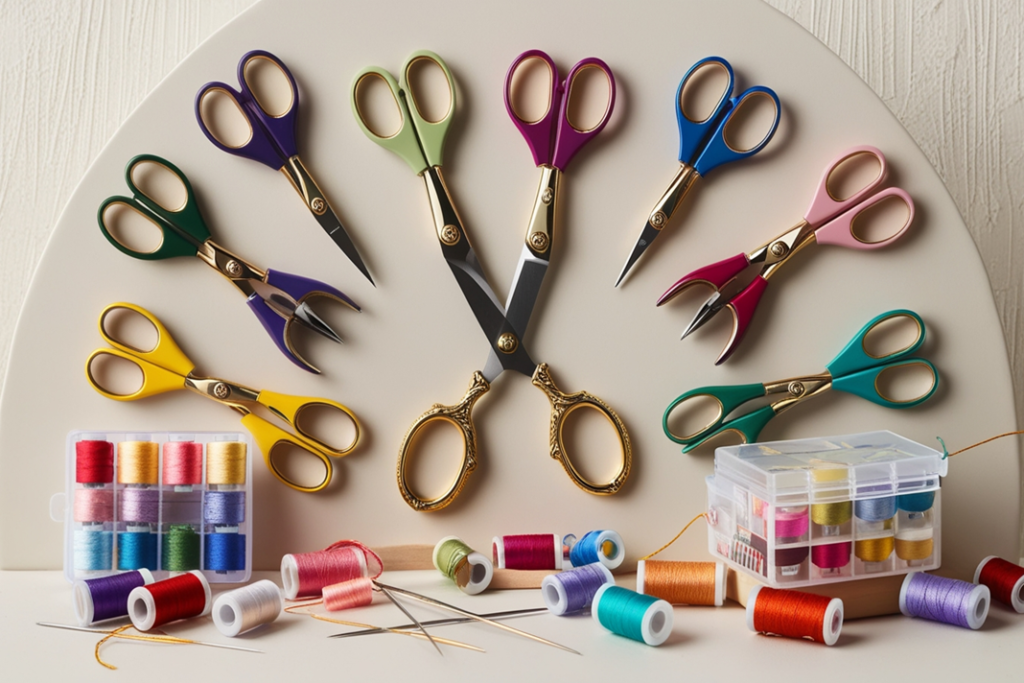
Scissors and Thread Snippers
Sharp scissors are essential for cutting threads cleanly and precisely. Thread snippers, designed for easy use, can help you quickly trim excess thread without fraying. Including a highquality pair in your kit ensures that your materials remain tidy and ready to use.
Needle Threaders and Organizers
Needle threaders can make life much simpler when working with fine needles or specialty threads, while thread holders and bobbins help organize threads more effectively, reducing tangles while making it easier to locate colors while stitching.
Thread Bobbins for Keeping Your Kit Tidy
Thread bobbins are essential for keeping your threads neatly wound and separated. Whether you use plastic or cardboard bobbins, label each with the corresponding thread number for quick identification. This will prevent unnecessary tangling and make your stitching process smoother.
Tips for Maintaining Your CrossStitch Kit
How to Clean and Care for Your Materials
Caring for your crossstitch materials ensures that they remain in good condition. Gently hand wash completed projects in cool water to avoid damaging the fabric or threads. Store your threads and fabrics in a dry, clean area to prevent moisture damage or discoloration.
Preventing Thread Tangles and Breakage
When crossstitching, tangles and broken threads can be very frustrating. To avoid this, always pull your thread gently and use shorter lengths when stitching. Store threads on bobbins to keep them organized and untangled, and try to untwist your thread regularly while working.
Proper Needle Storage for Longevity
Storing your needles correctly helps them last longer. Keep them in a needle case, or use a small magnet to hold them securely. Always store your needles in a dry place to prevent rust, and replace them if they become dull or bent to ensure smooth stitching.
How to Start Your First Cross Stitch Project

Reading a Cross Stitch Pattern: StepbyStep Guide
Once you know the symbols and grid, reading a crossstitch design is simple. Each square on the grid corresponds to one stitch, and the symbols represent different thread colors. Follow the chart line by line, starting from the center of your fabric to ensure even stitching.
Preparing Your Fabric and Threads
Before starting your project, prepare your fabric by ironing it flat and using a hoop to keep it taut. Organize your threads by cutting them into manageable lengths and separating colors according to the pattern. This preparation helps avoid confusion once you begin stitching.
Common Mistakes to Avoid for Beginners
Beginners often make simple mistakes, such as stitching with threads that are too long (leading to tangles) or not securing the first stitch properly. Start by using short threads and doublecheck your pattern to ensure accuracy. Also, be mindful of counting your stitches to prevent misalignments.
Cross Stitch Techniques for Intermediate Stitchers
French Knots, HalfStitches, and Backstitching
Once you’ve mastered basic crossstitch, advanced techniques can take your projects to the next level. French knots add dimension while halfstitches allow for finer detail while backstitching enhances the outline of your design – all these techniques can take your crossstitch projects to new levels!
Blending Threads for a Smoother Finish
Blending threads involves using two distinct colors of thread in the same needle to create subtle color transitions, adding depth and shading to your drawings while giving them an impressive professional appearance.
Working with Metallic and Specialty Threads
Metallic threads and other specialty threads can add a beautiful, shimmering effect to your project. However, they can be trickier to work with as they’re prone to tangling and fraying. When using these threads, take extra care, use shorter lengths, and work slowly to achieve the best results.
Adding Personal Touches to Your CrossStitch Kit

Customizing Your Pattern with Unique Colors
One way to personalize your crossstitch kit is by modifying the colors in the pattern. If a design calls for specific colors but you’d prefer a different palette, feel free to swap them out. This customization allows you to create a piece that reflects your personal style.
How to Embellish Your Work with Beads and Sequins
Incorporating beads or sequins into your crossstitch design can add a unique, textured element. Simply stitch them onto your fabric along with your crossstitches. This is a great way to elevate your design and make it stand out.
Creating Textures with Different Stitching Techniques
Experimenting with different stitches, such as satin stitch or longandshort stitch, can create interesting textures in your crossstitch projects. These techniques allow for more dimension and variety in your work, making it even more unique.
This guide on how to build your own crossstitch kit covers everything from choosing materials to customizing your own patterns, ensuring you have the tools and knowledge needed for a successful and enjoyable stitching experience.





























